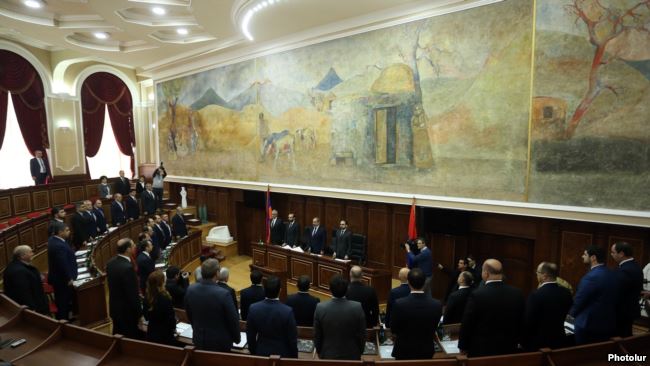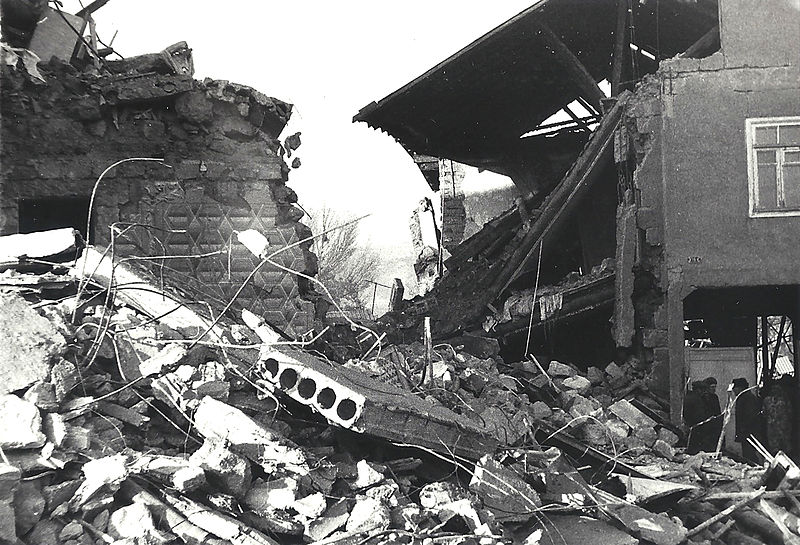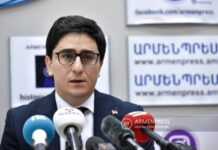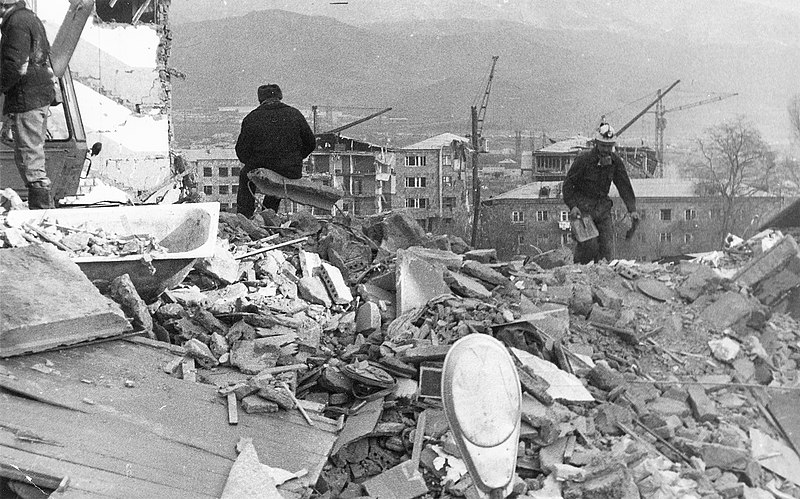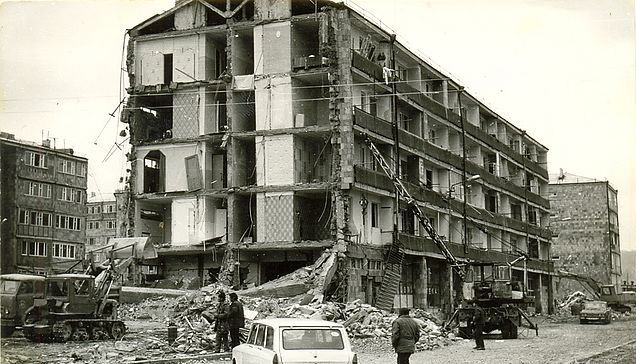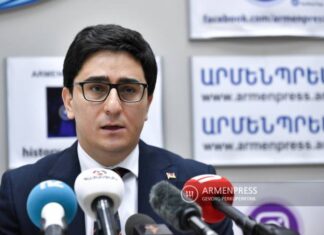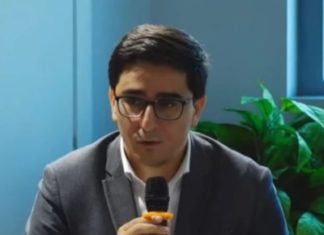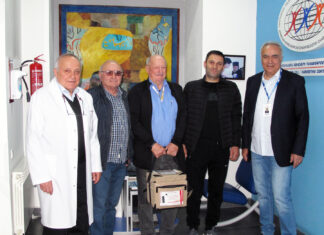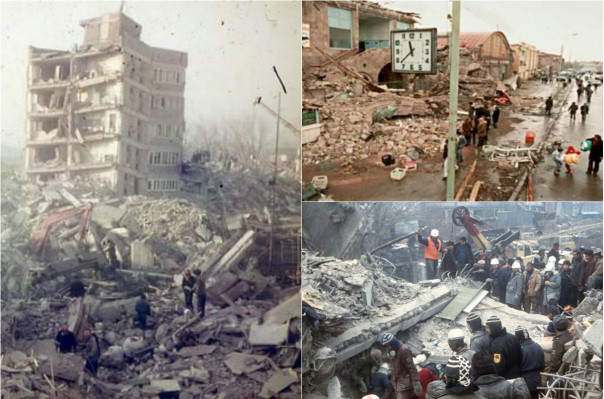
YEREVAN (Combined Sources) — Prime Minister Nikol Pashinyan chaired a special meeting of his cabinet in Gyumri on Friday, December 7, as Armenia marked the 30th anniversary of a catastrophic earthquake that killed more than 25,000 people and left hundreds of thousands of others homeless.
Pashinyan also led an official commemoration ceremony in Armenia’s second largest city, laying a wreath at a local memorial to the victims of the earthquake.
“The greatest damage caused by the disaster was probably the devastations that occurred in people’s souls,” he said at the ceremony. The recent regime change in the country and reforms promised by its new government should help to “restore the people’s hopes, confidence and optimism,” he added.
The magnitude 6.8 quake struck northwestern parts of what was then a Soviet republic of 3.5 million residents on the morning of December 7, 1988. Its epicenter was near Spitak, a small town razed to the ground. Gyumri (known as Leninakan then) was also hit hard.
The huge death toll was widely blamed on substandard construction exposed by the calamity. It turned out that many apartment blocks and houses in what many Armenians still refer to as a “disaster zone” were built in violation of seismic safety standards.



